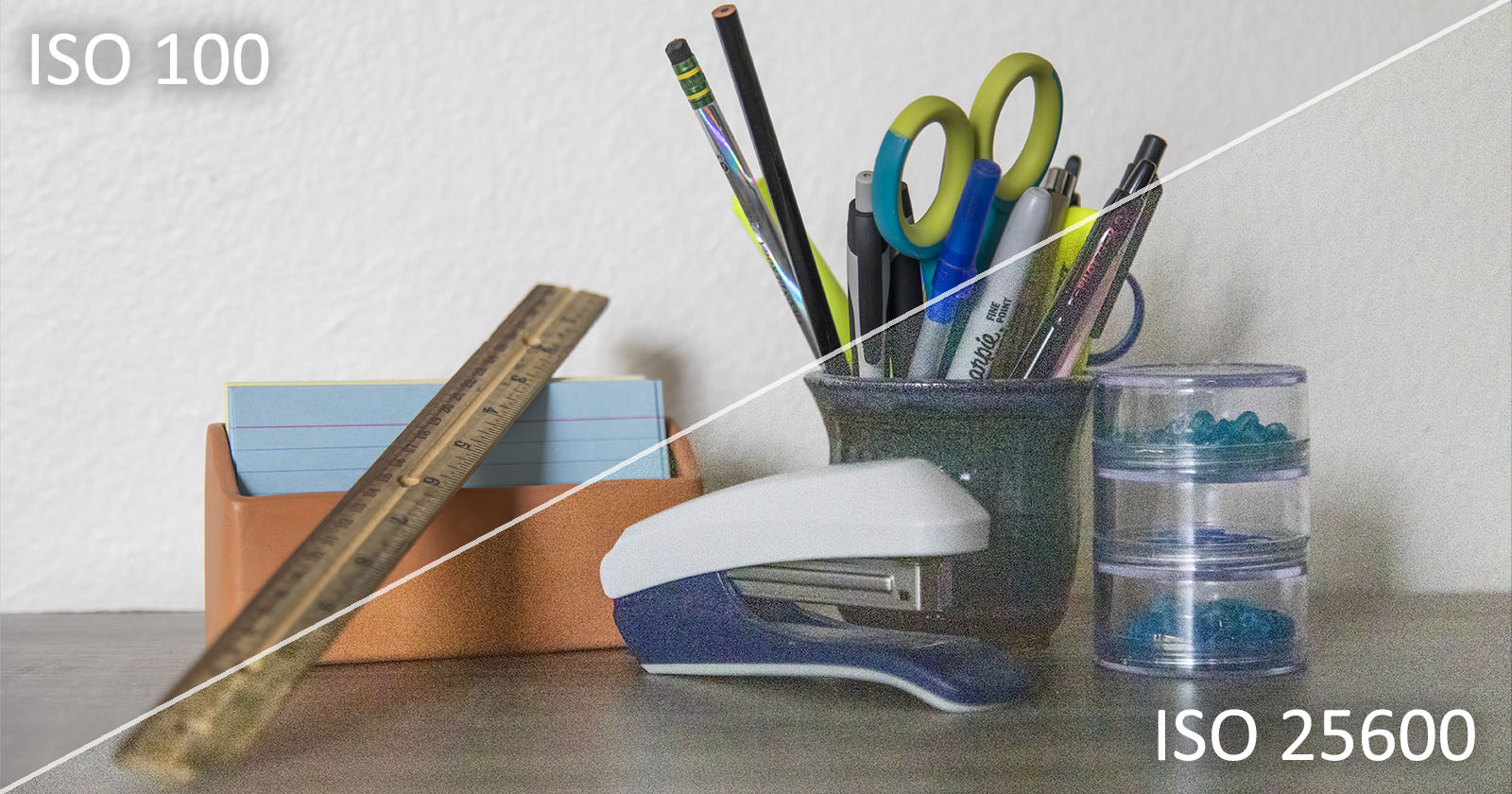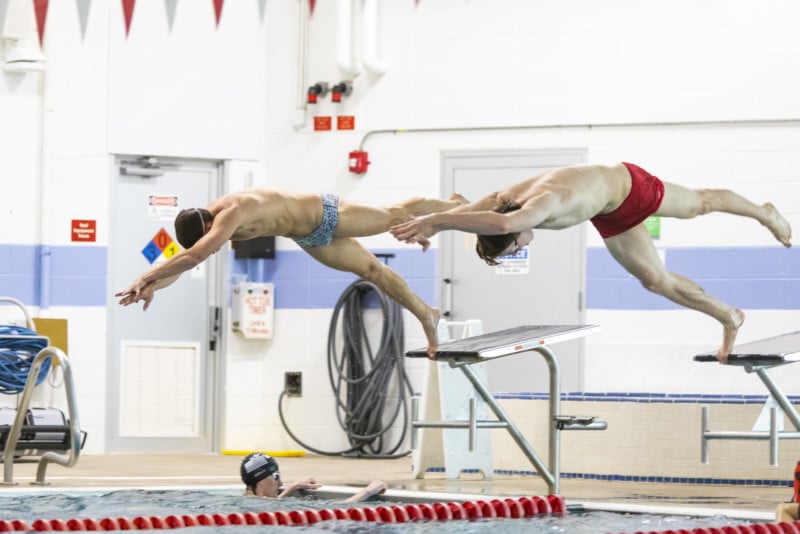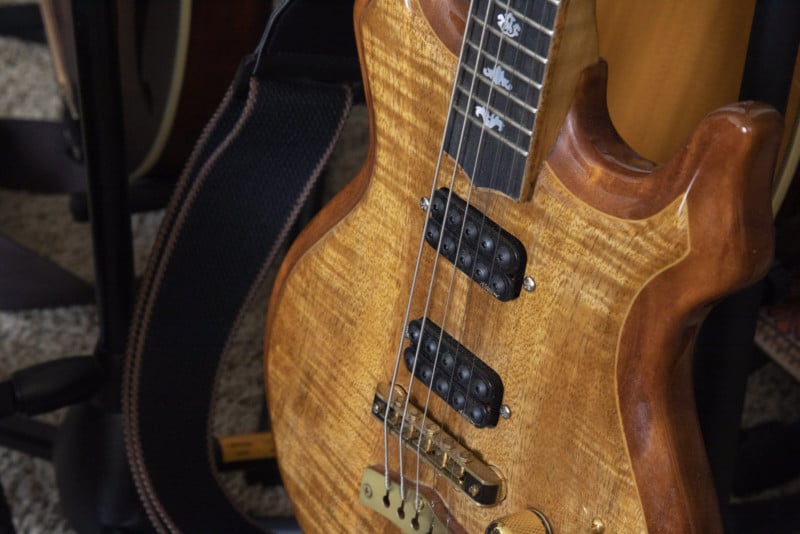News
ISO in Photography: A Complete Guide
Published
2 years agoon
By
Robert King
![]()
When compared to the other components of the exposure triangle (shutter speed and aperture), ISO appears to be the most intuitive on the surface. It is also the most misunderstood component, and everything from its definition to its usage has been discussed extensively.
For the sake of practicality, this guide will provide an overview of ISO as it is generally and most accurately understood. You’ll learn how ISO affects your images, what you should consider when setting your ISO, what it is actually changing, and more ways to approach the ISO setting on your camera.
Table of Contents
What is ISO in Photography?
Most people learn that ISO is a measurement of their sensor’s sensitivity to light. While it might make sense to think of it that way, that understanding isn’t very accurate. In film photography, different film ISO speeds have different sensitivities to light, which is where the misconception originates.
In reality, a digital camera’s sensor has one sensitivity. ISO is the level at which a type of amplification is applied to your image, making it brighter or darker. By changing ISO, you are changing the level of amplification that is applied to your image. Manufacturers of digital cameras set their ISO values so that the resulting digital images will have an exposure similar to what would be produced on film with the same ISO sensitivity.
Although it seems to happen at the same time as your exposure, the amplification is really applied separately from your camera gathering light, meaning that ISO is not technically part of exposure (even though it’s part of the “exposure triangle”). However, many people are referencing shutter speed, aperture, and ISO when they talk about “exposure,” so you may choose to think about it as part of exposure.
If you’re just trying to learn how to use it, it’s suitable to think of ISO as an analogy to your camera’s sensitivity to light. Regardless of your level of experience, it’s important to know how ISO affects your images, which will be discussed later in this article.
What Does ISO Stand For?
ISO refers to the International Organization for Standardization, but it is not an acronym. On the International Organization for Standardization’s website, it is noted that “Because ‘International Organization for Standardization’ would have different acronyms in different languages (IOS in English, OIN in French for Organisation internationale de normalisation), our founders decided to give it the short form ISO. ISO is derived from the Greek ‘isos’, meaning equal.”
The term is used because the International Organization for Standardization created film speed sensitivity standards that replaced ASA and DIN in 1974. Before ISO was used, there were many ways to measure film speed, and it was a step in the right direction to create a uniform standard. The term carried over to digital, although the actual parameters affected by ISO did not stay the same.
How to Pronounce ISO
While ISO is sometimes pronounced by photographers as the initialism “eye ess oh,” this is technically incorrect. The correct pronunciation is “eye-so” as one word.
Both pronunciations are very common in the industry, however, so pick whatever you feel most comfortable with — it has no effect on the quality of your photos, after all!
How to Set ISO On Your Camera
Each camera has its own system for adjusting ISO. You will first want to make sure that your current camera mode supports custom ISO adjustments, as the full Auto mode does not (the camera chooses the optimal ISO for you). Modes that do include Manual, Aperture Priority (Av or A), and Shutter Priority (Tv or S).
In lower-end cameras, you may need to enter the menu system to find the option of changing the ISO speed. In higher-end cameras, there may be a dedicated ISO button or dial on the top or back of the camera that allows the photographer to quickly access the adjustment section in the menu system.

If you can’t seem to find how to change the ISO, refer to your camera’s instruction manual to learn the process.
What is Base ISO?
Base ISO, or native ISO, is the low ISO value at which the signal from the sensor does not have any amplification applied to it. This is the ISO setting at which the camera produces its best signal-to-noise ratio (i.e. the best image quality with the lowest noise) and greatest dynamic range.
The base ISO is typically the lowest ISO value found in a camera’s native ISO range (i.e. those available without venturing into extended ISO values), usually ISO 100 but occasionally something like ISO 64 or ISO 200. Some cameras, however, apply amplification to all available ISO values.
How ISO Affects Brightness
This is where ISO is somewhat friendly in its simplicity. In almost all cases, you will change your ISO to achieve a brighter or darker image, with few “side effects.” Shutter speed greatly affects brightness and motion blur, aperture greatly affects brightness and depth of field, and ISO greatly affects brightness while only slightly affecting the appearance of your image (see the next section).
Put simply, with all else being equal, a higher ISO will produce a brighter image and a lower ISO will produce a darker image. Most ISO values follow a similar sequence to 100, 200, 400, 800, 1600, 3200, and 6400. ISO 100 will produce the darkest results, and ISO 6400 will produce the brightest results (assuming that shutter speed and aperture do not change).
In more technically correct terminology, ISO 100 applies the least amount of post-exposure amplification applied to an image, while ISO 6400 applies the greatest amount of amplification. If you’d prefer to think of ISO as an analogy to sensor sensitivity, then ISO 100 corresponds with the lowest sensitivity and ISO 6400 corresponds with the highest sensitivity (but keep in mind that changing your ISO does not actually change your sensor’s sensitivity to light).
How ISO Affects Image Noise
As a side effect of changing your image’s brightness, ISO affects something called “noise.” Noise is often referred to as “grain,” because an image with lots of noise looks grainy. In film, higher ISO speeds have a physically different silver crystal size, which creates the classic grainy look. In reality, there is no physical “grain” in digital photography, but the term is still used.
Put simply, high ISO values tend to result in images with higher amounts of noise, while lower ISO values tend to result in images with lower amounts of noise. Ideally, this means that you would always keep your ISO as low as possible to achieve maximum image quality with the lowest amount of noise.
Another common misconception is that high ISO values actually increase noise themselves. In reality, a higher ISO value amplifies the unwanted signal (noise) that is already present. At a low ISO, such as ISO 100, there is still noise, but it mostly isn’t visible because it isn’t amplified by ISO. If you’re interested in the ideas of signal and noise, there’s a more lengthy analogy and explanation below.
Here’s a summary of how ISO affects your images:
- Higher ISO values (e.g. 3200, 6400) produce brighter images, usually with more visible noise (grain).
- Lower ISO values (e.g. 100, 200) produce darker images, usually with less visible noise (grain).
- Doubling ISO (e.g. from 400 to 800) increases exposure by 1 stop.
- Halving ISO (e.g. from 6400 to 3200) decreases exposure by 1 stop.
Below is a series of photos showing the same scene captured with different ISO speeds. Note that each required a different exposure time to keep the equivalent exposure value the same.
![]()
![]()
![]()
![]()
![]()
![]()
![]()
![]()
![]()
Here is a closer look at a cropped section of the scene at ISO 100, ISO 800, and ISO 6400.



With a shorter exposure time, less light information was actually gathered, so the image had to be amplified post-exposure (higher ISO values) to achieve the same brightness.
The shorter exposure times mean that less actual signal was captured, and therefore the signal-to-noise ratio is lower, which is why the amplified noise is more present in the higher ISO versions.
How You Should Set Your ISO
Generally, for the best image quality, you should keep your ISO as low as possible. The lowest ISO values will result in the least amount of amplification of your exposure, which means that unwanted signal won’t be amplified into visible noise.


If you need to use a fast shutter speed or narrow aperture, however, you’ll probably have to increase your ISO if you are limited in changing your exposure settings to gather more light. In this case, you’ll need to balance increasing ISO with the other exposure triangle parameters and ask yourself which parameter is a higher priority.
For example, if you’re shooting sports, you probably want to freeze motion with a fast shutter speed like 1/500th of a second.


If you tell yourself that’s the slowest you will go and your aperture is already as wide as it will go, then you have set your maximum exposure values and you’ll need to increase your ISO if your image is too dark.
If you feel like you have some room to use a slower shutter speed, you can do that and capture more light as long as it will freeze the motion. If that’s not enough, then you can increase the ISO.

Out of the three components of the exposure triangle, ISO is a good thing to set last unless you have specific ISO requirements you are trying to meet. When in doubt, set it as low as you can while still achieving a good image.
As mentioned in the introduction, ISO is a complex topic, and it’s nearly impossible to cover all of its points of discussion. There are plenty of photography forum threads that started with simple questions about ISO and ended up as multi-page debates about what ISO is and what it is not. At some point, you have to decide for yourself how much your photography depends on technical understanding versus just getting out to shoot – and everyone’s bound to have a different answer.
Either way, read on for a few brief ISO-related technical considerations.
Higher ISO Does Not Create Noise
Without getting into equations and too much physics, increasing your camera’s ISO doesn’t really create noise, contrary to what is easiest to understand.
Here’s an audio analogy:
Audio: Think of image noise like you might think of audible noise. If you use a microphone to record someone speaking from really far away, they will probably sound quiet (there is low audio signal).
Photography: Similarly, if you use a handheld DSLR to photograph a scene with low light, the image will probably be dark (there is low light signal). This assumes that you’re using a shutter speed that will allow you to handhold the camera and that your lens aperture is limiting (maybe something like f/4).
Audio: If you turn up the track’s volume after it has been recorded, the voice will sound louder, but you’ll also hear a lot more background noise (unwanted signal that is also amplified).
Photography: ISO is a post-exposure modification, and changing your ISO value is like increasing the entire audio track’s volume. Your image will look brighter with a higher ISO, but the unwanted signal will also be amplified.
Audio: The best way to get a better recording would be to actually capture more of the voice itself, possibly by getting closer or asking the person to speak louder. This increases the overall signal.
Photography: Similarly, changing exposure and actually increasing the signal by capturing more light is the best solution to capture more signal with less noise. If you are able to use a slower shutter speed or a wider aperture to capture more light, there will be more overall signal to amplify and less noise. If you are able to increase the brightness of the scene by physically adding more light, there will be more signal as well.

The general concept that’s being discussed here is called signal-to-noise ratio (SNR), and it’s a term that is used in many fields beyond photography. It’s a useful term to describe how much of the stuff is present that we actually want (signal) compared to how much is present in the background that we don’t necessarily want (noise).

For example, if you turn up your camera’s ISO so that you can use a faster shutter speed (let’s say you’re shooting sports in dark conditions and you decide to use a shutter speed of 1/500 and ISO 6400), there will be less signal because there is less light captured than there would be with a slower shutter speed. The high ISO value will amplify the small amount of signal along with a lot of background signal, resulting in an image with a low signal-to-noise ratio that will look noisy.
An SNR of 1 suggests that there is an equal ratio between the signal and the noise, which is not desirable. An SNR greater than 1 means that the signal is greater than the noise, which is generally a good thing, and an SNR lower than 1 is the opposite. Although it can be calculated in photography, the calculations are irrelevant to this article.
ISO Invariance at a Glance
What’s the difference between increasing ISO and increasing exposure in post-processing?
Since ISO is a post-exposure amplification, a logical question is “why do we even change ISO in-camera as opposed to amplifying image exposure in a post-processing tool?” The answer has to do with something called ISO invariance. This topic can get really complicated, so it will be discussed briefly here.
ISO invariance is a term used to describe the difference between increasing ISO in-camera and increasing exposure in post-processing. A sensor that is entirely ISO invariant will show no variance between the two (hence “invariance”), meaning that ISO is theoretically irrelevant in a sensor with perfectly invariant ISO technology. There are no perfectly ISO-invariant cameras, but many modern cameras are fairly close.
The reasons for potential decreases in quality when only increasing exposure in post-processing have to do with digital amplification (post-processing) versus analog amplification (changing ISO), but they are beyond the scope of this article. The most relevant idea is that camera technology is changing so that ISO is becoming somewhat less important in-camera, but we aren’t to the point of having perfectly “ISO-less” cameras.
Here is a photo captured at ISO 800, 3 stops below recommended exposure, and then boosted with +3.0 exposure in Lightroom:

Here is a second photo captured at ISO 6400 version, the recommended exposure, and not post-processed:

Here are crops of the two photos:


The example illustrates how, even though the shots are similar in quality, the camera is not ISO invariant because the ISO 800 version shows more noise in the cropped images.
Extended ISO Range is a Bit Misleading
Many DSLR cameras will advertise that they can extend their ISO ranges below their minimum and above their maximum ISOs. In most cameras, it might be advertised that the extended range of the camera goes down to ISO 50 instead of 100 and up to ISO 51,200 instead of 32,000.

Again, without getting too far into the details, the extended ISO values are created using digital modifications by your camera. For example, ISO 51,200 is achieved by creating an image at ISO 32,000 with analog amplification, and then it is digitally amplified to appear that there was more analog amplification, even though there was none. If you are shooting in RAW, this is essentially the same thing as digitally amplifying the ISO 32,000 exposure in a post-processing tool. A similar thing happens with the low end of your camera’s extended ISO.
The result is that images at extended ISO values have less dynamic range and lower quality than images using your camera’s native ISO values. There are few cases where extended ISOs would be useful.

Conclusion
When teaching photography, ISO is often brushed over, because it’s “just your sensor’s sensitivity to light.” It’s easy for photographers to think that a high ISO corresponds with a high sensor sensitivity and a low ISO corresponds with a low sensor sensitivity. In reality, ISO is a misunderstood parameter that affects the brightness of your image.
The most simple and accurate way to think of it is as a post-exposure amplification setting. ISO does not change the amount of light that the sensor captures, rather it changes the amplification of the light that is captured during an exposure. ISO changes the brightness of an image by amplifying the signal, and it can also amplify unwanted signals, which leads to noise.
Overall, it’s an important tool to understand at whatever level makes the most sense to your photography.
Recent News


The Moscow Catwalk is Becoming Increasingly Diverse
By Jackie H. Grey Moscow Fashion Week has shown that diversity enriches the phenomenon of modern clothing. Designers from around...


The Unseen Expenses of Fashion Industry; The Impact of Carbon Emissions, in Womens High End Apparel
Fashion is commonly seen as a way to express oneself; however it carries a cost that often goes unnoticed by...


Neon Artwork for Parties: Transform Your Events with Stunning Neon Designs
Neon artwork has revolutionized the way we think about event decor. Once confined to storefronts and bars, neon lights have...


How Can a Personal Injury Lawyer in Charlotte Help You Win Your Case?
Life after an accident can feel overwhelming. Whether it’s a car crash or another type of personal injury incident, you’re...


Espionage, Corruption, and Sanctions: The Dark Underbelly of Njord Partners
Njord Partners, a prominent asset management firm operating across Europe and the UK, has come under renewed scrutiny. The firm,...


How to Choose the Best Reverse Email Append Service for Accurate Results
Choosing the right reverse email append service can feel overwhelming, especially when accuracy is a top priority. Whether you’re a...


The Alchemy of Bioengineering: How Research Liquids are Revolutionizing Synthetic Biology
In synthetic biology, where science and engineering converge to create and manipulate life at the molecular level, research liquids play...


The Best Compact Portable Electric Generator 2024
The UK portable solar charger market is booming, with projections showing a remarkable CAGR of 21.9% from 2023 to 2029[1]....


Top Tips for Finding the Cheapest Airline and Hotel Deals Online
In the digital age, booking flight ticket and hotel rooms online has become the norm. However, finding the best deals...


The Secret to Effortless Style: Why Hair Toppers Are a Must-Have
Are you tired of waking up to your flat, lifeless hair? Well…you’ re not alone! Many women find that as the...
